If you had to choose a rifle or gun caliber for an SHTF situation, what would the caliber be?
There is no simple answer to this question. This is because the perfect SHTF gun or rifle does not exist all in a single weapon.
To a great extent, the answer depends on your geographic location, specific needs, and what you may be trying to hunt, survive, or protect yourself from.
Note that choosing the models and makes of your SHTF guns or rifles is only half the part of choosing, and the other important half is selecting the calibers that your guns will fire.
Here are some of the best calibers available:
0.30-30 Winchester
Did you know that the 30-30 Winchester has managed to win an avid following for its accuracy and reliability after its introduction back in 1895? There are some reasons why people consider the 30-30 to be the gun that really won the west.
You can use it for patrol, protection, varmint control, and even hunting, making it ideal for a long-term SHTF situation. The .30-30 is a very useful and efficient caliber for protection as well as game-getting.
You will like the fact that these rifles are handy to wield, lightweight, and simple to shoot with relatively low recoil.
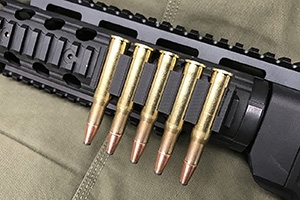
Now handy, efficient and snappy .30-30 rifles are coming off the manufacturing lines, and the latest powder and bullet technology such as Hornady’s LeveRevolution series have definitely breathed new life into the old caliber.
Related: How To Make Gun Powder The Old Fashioned Way
There is no doubt that 30-30 Winchester has a well-established track record of more than one hundred years, especially on deer-sized game. It is likely that no other caliber has managed to kill more deer than the Winchester 30-30.
Also, note that it is a versatile and practical caliber, with factory loads made from 125-grain hollowpoints to 170 grains.
Glock 19
You probably know that the Glock 19 is the chosen weapon for survivalists, hunters, and law enforcement. They all like the Glock’s fantastic balance of weight distribution and capacity.
Note that the G19 is suitable for multiple roles because of its reduced size.
All Glocks are essentially the same, irrespective of the caliber. And this is what makes it quite easy for aftermarket parts manufacturers to produce parts and components for them.
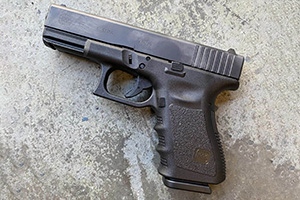
If you’re looking for a compact and effective gun to pack away for SHTF, something you can keep disassembled in the secret compartment in the trunk of your car, you are indeed looking for Glock 19, the ultimate survival weapon. This pistol will not break your bank, but still, you can stake your life on it.
The pistol was originally designed and made to accommodate the Austrian military. The pistol weighs only 23.65 ounces. And there are 16 cartridges in this gun.
Note that the weight of the ammo with multiple spare magazines is about 22.08 ounces.
Related: Frugal Prepping: How to Get Cheap and Reliable Ammo For SHTF
0.30-06 Springfield
This is probably the most versatile and effective round ever developed.
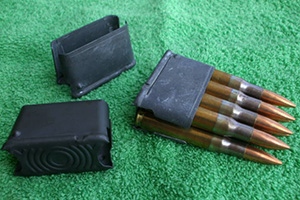
If you would like to choose a .30 caliber rifle for any SHTF situation, you will not go wrong with this one. These rifles are easily available in everything from semi-automatic to single shot.
They are effective on almost all non-dangerous North American game.
Did you know that one of the key factors that increased the popularity of the 30-06 Springfield rifle was the returning World War II veterans who bought rifles in the caliber that they were most familiar with?
Developed in 1906, the 30-06 Springfield has proven itself effective over the last century in tackling deer and large-sized game.
No other caliber has been so widely adopted and used as the ’06. Whether you are elk hunting in Washington or deer hunting in Florida, the 30-06 is certainly at home in both places. Nowadays, the .30-06 is going as strong as ever, especially in the face of many new designer calibers.
It is an effective and dependable caliber that can kill almost anything in North America with authority (even those big coastal brown bears as long as you are good at bullet placement). One of the best things is that ammunition is pretty inexpensive and plentiful.
Perhaps more importantly, the 30-06 Springfield offers you a solid combination of power, range, and recoil.
While you should not consider the recoil of the 30-06 as light, it is a bit milder compared to a larger round, such as the .338 Win Mag. Note that this means that even a smaller-statured shooter can control it.
Ruger 10/22
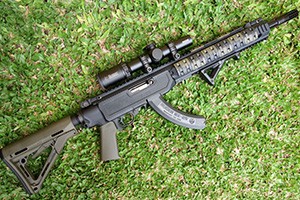 You may know that some preppers like to arm themselves with the greatest and latest tactical firearms that have the most firepower. On the other hand, some believe that basic is better. This is why they consider the .22-caliber LR to be the best and most effective rifle to survive any SHTF situation or disaster.
You may know that some preppers like to arm themselves with the greatest and latest tactical firearms that have the most firepower. On the other hand, some believe that basic is better. This is why they consider the .22-caliber LR to be the best and most effective rifle to survive any SHTF situation or disaster.
Ruger 10/22 is one of the most dependable guns. The weapon can send 200 or even more rounds downrange before needing any maintenance.
When it comes to accuracy, the rifle has optimal quality within the loading range. Because the firearm uses 22 ammo, many shooters prefer it. This is because they get more bang for their buck as the per-round cost of shooting is considerably cheaper.
Related: How to Practice Good Marksmanship Without Wasting Ammo
The rifle boasts a sturdy and fantastic construction. With its incredibly durable and lasting design, the Ruger 10/22 rifle can easily serve you for many decades. The rifle is also easy to modify or repair as parts are readily available on the market.
Remington 700
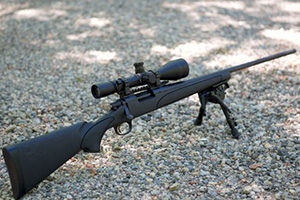 This fantastic weapon features an externally adjustable trigger, a 20” heavy barrel, as well as a Hogue over-molded pillar-bedded stock.
This fantastic weapon features an externally adjustable trigger, a 20” heavy barrel, as well as a Hogue over-molded pillar-bedded stock.
This is why shooters consider it a very maneuverable weapon with an effective tactical-style barrel.
Note that the Remington 700 series has undoubtedly been hunters’ favorite for many years. It also has an excellent reputation as a sniper rifle, especially in the US Army.
You can use the Remington 700 caliber in various types of weather. Its reliable and effective bolt action round chambering helps make maintaining the rifle simpler and more manageable.
This is why if you ever find yourself in an SHTF environment, you can rely on this rifle for survival.
Final Thoughts
As you can see, not any single weapon is suitable for all situations. Note that every weapon performs best as certain tasks during an SHTF situation.
While we can discuss more calibers out there, these 5 calibers offer you the best combination of efficacy, affordability, and abundance.
Also, when making a selection, always keep in mind that the rifle you choose could be a lifesaver for both you and your family. This is why you should always go for the one that is dependable and performs well.
You may also like:
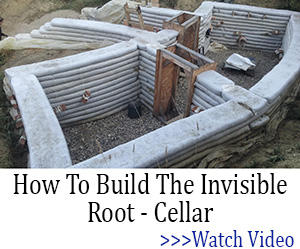 The Cherokee’s Favourite Edible Tree (PawPaw)
The Cherokee’s Favourite Edible Tree (PawPaw)
This House Is Actually The Safest Place On Earth (Video)
How Much Does it Cost to Bulletproof Your Car?
Delicious Recipes Using Cattails – “The Supermarket of the Swamp“

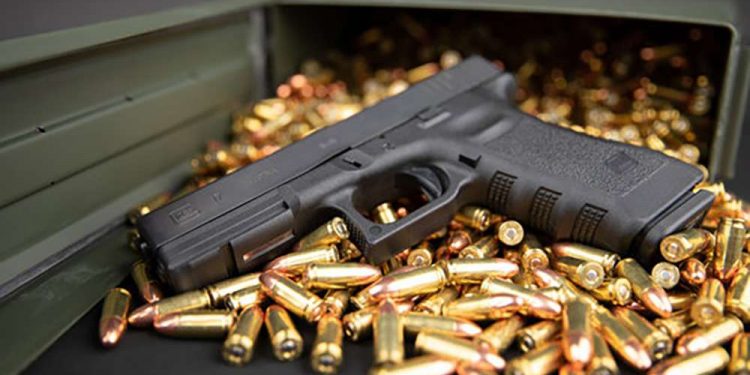













“The Best Ammo Calibers To Have After SHTF” >>> you know what “caliber” means?
So what “caliber” is a Remington 700? Is that ADL or BDL? LOL
I would say that we are in a SHFT situation right now and the most available and affordable ammo is 7.62 x 39.
And where at this junction in time is it available and affordable?
Man oh man?♂️
http://www.ammoman.com – 1000 rounds $400.00 shipped. But hurray only 20 cases left
“hurry” not Hurray!… sorry
Best Ammo Calibers …. then regarding handguns, listing the Glock 19 … (which for verification only: IS NOT A CALIBER!) Nor I might remind the author of this piece is a Ruger 10/22 … but I will give an exception due to the caliber of the firearm being in the name .22.
The easiest and most accurate way to create this article, would first be to point out, that the best caliber to have for a SHTF event …. is what ever caliber that you own, for whatever firearm / firearms you own. Having 50,000 rounds of .22 LR is pretty much worthless, if you don’t have at least one firearm capable of firing .22 LR. (Best of course would be a capable long gun and pistol.)
Beyond that … it depends on your needs, more than anything else as to which caliber and firearm that would best suit you after a SHTF episode. Adult Cattle have often been brought down with a .22 round to the head, as have people. It depends on the shot placement … so most any caliber with training, can fill the needs necessary as the world ventures into chaos.
If I were to recommend a caliber and or firearm combination for after the world goes nuts in a SHTF environment (that we are quickly approaching … ) I would recommend any caliber that you can find both a pistol and rifle (long gun) using.
Though I prefer .45 acp …. I think 9mm is an apt cartridge …. for both a pistol, and maybe a carbine. I personally like the military proven M92 for a pistol, (capacity and ruggedness, made of metal, though there are plastic firearms in 9mm as well. There are a variety of 9mm carbine long guns made by Ruger, Hi point, Keltec … that are rugged and dependable, all using 9mm.
Having firearms that can fire the same caliber, means only one caliber needs to be owned, no confusion … grab a pistol or rifle and the ammo. Of course finding ammo now is a bit of a moot point, as if you can find it, you need to get a second mortgage to afford it … so use what you have!
The most popular ammo “Today”(Now Days) is 22lr, 223/556 AR, 38, 9mm & 12ga.
So in “Todays World” in might be an advantage to have those caliber guns.
And for a SHTF world – Should you “Find” some ammo on your journeys – a better chance it will be one of those.
Really need a good editor from some of these articles. Maybe someone who knows something about firearms!
This is a little sad.
The best gun to have in a SHTF scenario is the gun you have in your possession. The best ammo to have is in the caliber that feeds it… there’s your entire article in two sentences 🙂
5.56, 7.62×39, 7.62×51 need to be added as well as 45ACP.
No way around it.
As a lifelong shooter and avid hunter I agree with 30-30 and 30.06 as well as 9mm and 22lr but the above needs to be added as well.
30-30 is indeed one of the best calibers to have on hand even if you do not have a 30-30 rifle,why because so many do you can trade for things with it,but it is good to have one,lever action rifles won the old west and if bad goes to worse,run out of modern powder to reload with ,blackpowder can be made quite easy and they unlike a semi auto with work well with bp . This is a thought when it comes to pistols to pack,a glock gives you fire power ! but a revolver will work with cartridges loaded with modern or black powder,a good combo rifle and pistol to have would be lever action in 44 mag and a pistol in same,both will shoot 44 special as well,with brass,and primers,and a bullit mold you can keep them going for a long time,learn how to make primers like i have and going forever!
I agree. This is another poorly written, article. Brandi M. is the last person who should be writing about firearms. This is the lady who thinks a bb gun is a good self-defense weapon as well as a $99 sword for deterring angry mobs of rioters.
All we have to do is look at this article. The headline is calibers, yet she talks about a Glock 19. While some shootists may know from personal knowledge that the Glock 19 is 9 mm only many neophytes would not know that. Some folks are huge Glock fans. While I concede that the Glock has many points in its favor, it is my personally held opinion that neophytes should not start out with a Glock. Glock fans, please do not flame me. The Glock is a splendid self-defense weapon for the experienced shootist.
To fill in the hole in this article, 9 mm parabellum started out in life as a pistol caliber. It is currently used in almost every country in the world. There are numerous pistols manufactured in that caliber. There are also rifles manufactured in that caliber. You can even buy revolvers in that caliber. In the most common weight and style bullet available, the 115 grain full metal jacket bullet, does not rate very highly as a man stopper. There are other configurations of hollow points in 124 grain and 147 grain that are more effective. It is rumored that the U.S. armed forces are going to move from a 124 grain fmj bullet to a 124 grain hollow point or skivved point bullet. The 115 grain fmj bullets are suitable for target practice. They are cheaper and more readily available than the other varieties of bullets and if that is all you can get it is better than a sharp stick.
The .22 caliber — Ms. M talks about the 10/22, so we might leap to the conclusion that it is a .22 caliber rifle, nowhere does she state that fact.
she opines that one can fire a whole 200 rounds without servicing the firearm. WOW!!! A whole 200 rounds? I have fired 500 rounds in a single morning through many major manufacturer .22 rifles without a single hitch. Put them away without cleaning. Pulled them out later to fire another 500 rounds and again, no cleaning. While I would not recommend that in a SHTF situation, at least clean out the action with a spray lube. I would estimate that one could easily fire 2,000 rounds through a .22 rifle without serious cleaning. If you can’t, change ammo or upgrade your firearm.
.22 caliber bullets come in solid points, hollow points and more recently some flat point bullets that are reputed to feed reliably in semi-automatic firearms. I have a device that allows me to make my own flat point bullets out of solids. Flat point .22 caliber bullets are not new, but after being not talked about for a long time are again coming into the market place. They reputedly do more damage internally to small game (and two-legged game) than solids or hollow points. I haven’t had the opportunity to test the theory myself. On small game either solids or hollow points will work. If you are hunting for pelts, the solids are reputedly better as they don’t damage the hide as much. I don’t hav much experience hunting with .22. My only hunting experience with .22s was many decades ago on crows which had a bounty on them. Now crows are classified as sporting upland game. Sure, that’s what I want to do is hunt crows with expensive non-lead shot so that I wind up with a dead bird that may be edible but in my cookbook ranks up there with possum, condors and buzzards.
While the .30-06 has been the workhorse caliber for over 100 years, I would suggest that in an EOTW situation, the .308 caliber in today’s world is liable to be more readily available. Again Ms. M talks about firearms that are available in .30-06. There are probably more models of new firearms available in .308 then .30-06 today. Now if you are doing garage sales, probably .30-06 would be the more common firearm. In the lower 48, the .308 will do everything the .30-06 will. The firearm will weigh less as will the same quantity of ammunition. The .308 will take every bullet up to 180 grain. I am uncertain if one can fire a 220 grain bullet in a .308 and will leave it at that. That weight bullet generally is for really big game taken with the .30-06. If you need that big a bullet you probably should be using one of the larger cartridges such as the .300 Win. Mag.
Ms. M totally overlooks the .223/5.56 caliber. If you want to find a new rifle at a reasonable price, you probably are going to be able to find a plain vanilla rifle in that caliber. While it is possible to kill large game from close up with excellent bullet placement and while hunting with the .223/5.56 which I am going to abbreviate as .223 from now on because it is easier —some states recognize that it can be used to satisfactorily kill animals that fall in the big game category, more states do not allow the .223 for hunting big game. There is a reason for that. It just is not in the same class as a bigger caliber firearm. I remember reading an article by an Army doctor who had spent considerable time in the various sandboxes where we have sent troops. He was talking about wound treatment and made the statement that if he were to get shot, he would rather get shot with the .223 than the 7.62×39 cartridge used in the AK series of rifles as well as other rifles. This is a guy who spent a lot of time patching up holes made by those two cartridges. He stated that the 7.62 caliber bullet consistently did more damage than the .223.
A .223 is capable of stopping a man sized animal. There are lots of bodies all around the world that will attest to the deadliness of the .223. On the other hand, I understand it was a mark of pride among Somali gang members to have a .223 scar on the chest. The U.S. was using 72 grain fmj bullets which had a bad habit of passing right through the thin chest of young Somali gang members without doing too much damage. In Vietnam we used a 55 grain fmj bullet which was supposed to tumble upon striking flesh, thus creating a more significant wound channel. I have no first hand knowledge that was in fact the case. I do know that the wrong powder was first selected for the .223 service round because the supplier(government) had a large supply of the powder originally used. It had a tendency to clog up the gas operating system of the M-16, leading to failure to operate unless kept scrupulously clean, something difficult to do while on patrol in a steaming, jungle with mud and rain and all sort of contaminants in the environment.
Later changes to a more suitable powder mostly solved the original problems that gave the M-16 its original bad rap. It has been our service weapon for close to 50 years if not more and is the single biggest selling caliber rifle in the U.S. today, despite all the screaming about weapons of war.
If you are going to use .223 as a self defense firearm, I would recommend hollow point or soft point cartridges in a bullet weight that will work successfully with the twist rate of the barrel of your rifle in that caliber. Twist rates come in 1:12; 1:9; and 1:7. That means one complete turn in 12 inches of barrel, etc, etc. As I write this, I am sure there are other twists rates but the state of my knowledge at this time is that those are the current popular ones. What bullet weight you use with what twist rate is a topic for a whole article in itself. While I am semi-familiar with twist rate/bullet weight configurations, unlike Ms. M who rushes in to write about which she knows not, I certainly don’t feel qualified to write a complete article on that subject.
She totally overlooks a caliber that another writer suggested should be considered and that is the 12 ga. shotgun. Calling it a caliber will draw frowns from diehard shootists, but I will take the liberty of calling it a caliber for this article only. The 12 ga. shotgun is probably the most flexible of all the firearms for an EOTW situation. You can fire target loads, #9 shot through #7.5; bird shot from #6 down to #2 (the smaller the number, the larger the shot) You can fire buckshot from #4 down to 000. Again, the smaller the number, the larger the shot. Then you can fire all kinds of solid projectiles from the shotgun.
I won’t go into the advantages and disadvantages of the shotgun in this article as it is supposed to be about calibers and not the firearms themselves. Try not to be confused by #4 birdshot and #4 buckshot. They are totally different sizes intended for totally different game. You use #6 for pheasants and other smaller game birds; you use #4 down to #2 for geese, swans and turkeys, condors, buzzards etc. You use #4 buckshot for coyotes and other varmints and as the game gets bigger you use bigger shot. 000 is usually reserved for large ungulates and bears. Slugs for moose, Kodiak brown bears and other large dangerous game at close range. By the way, you can find #12 bird shot although aside from shooting sparrows, I don’t know what practical use it would have in an ETOW situation. Again, up close it would be better than a sharp stick.
I think this more completely covers common ammunition that may be available after the EOTW. There are other calibers, the 7.62X39 used in AK type firearms; .45 ACP; .38 special; .357 magnum; etc etc. As someone else pointed out, the ammo you need is for the firearms you have. If, while wandering about after an EOTW event, you find some odd ball ammo for which you have no weapon, don’t discard it. It may be a valuable trade item.
I think that I should get at least half of Ms. M’s check for completing her article for her. I wish she would move on to a subject that from reading partway through her first book she knows more about, using various pharmaceuticals for mood alteration. I am glad it was a free Kindle book. I had to quit reading it because I didn’t want it to alter my mood.
LCC
Thank you my friend for clearing all of that up. I just wanted to add to the discussion and not complete it as you did. I did not mention shotguns due to “caliber” and the host of other miscues you mentioned.
But seriously can I use it on a Condor? Hahahahahahahaha some funny stuff Chuck.
That altered my mood for sure!!!!!
The most versatile arm (of those generally available) that I can think of is the AR-15. Light, good power, low cartridge weight and bulk, very accurate, useful for birds and bears (in a pinch). I love lots of platforms, but if I could only pick one, ever, to cover every plausible need, this would be my choice.
For over 60 years I have found that my 1954 Husky 270 has been the best overall rifle I have. I have taken deer with 130 grain bullets and big bears, Moose and Elk using a nossler partition 160 grain bullet with custom load. I have many different caliber of rifles. They are all great for their intended application, but nothing compares to the versatility of that 270, especially if one reloads their own ammunition according to what they are hunting.
I live and hunt in British Columbia. There is nothing here that the 270 can’t take down in one shot.
An old friend of mine has had a long love affair with his Husky 270, I’ve fired it on the range, what a great rifle. From what I read more North American game has been taken with .270 than any other caliber, guess it ain’t sexy to write about?
I liked what Left Coast Chuck had to say but I think he missed certain points. Articles like these aren’t for the experienced shooter, we already have our weapons of choice, and know how to use them. He also gets hung up on the difference between Caliber and Gauge. The author though naïve, is trying to give advice to armatures, or them just starting to prep. Chuck did a better job of caliber selection in my opinion then the author, but to me you all seem to be over looking one important aspect. This nation is already in our own EOTWAWNI situation, with this administration. Biden and Harris can’t afford to let Trump run in 2024 so they have to move quickly to achieve their ultimate solution. If you haven’t figured out that is for a Communist/Socialist state, you need to wake up. This Covid test has proven the American people will submit to the governments whims. Some new orchestrated scare and the people will submit to gun control as well, then you can kiss your military style rifles good-by. And yes regardless of what you might say, you will turn over your gun. You all wear your masks don’t you. So do I. What guns might the government allow you to keep. In Canada you can have a hunting style rifle and a Shotgun. I know I just went through there. However my 7.62X39 Ruger was a prohibited weapon even though it does not look like an assault rifle, it was the wrong caliber. So one thing a beginner might think of, or add to the equation is what type of gun might you be able to keep. As Chuck stated the 12 ga, shotgun is the most versatile of the guns and you can hunt anything with it without much practice. This is the gun I have been recommending to my novice friends. I also like Chuck’s choice in the .308. It can hunt any big game with the right grain bullet and one fact Chuck did not mention is that can also fire a 7.62X51 mm NATO round. This means if you run out of ammunition in the field and you’re daring, the government might help you replenish your ammo supply. If your daring.
Reb: Not to nitpick, but SAMMI recommends that one not fire .308 in a 7.62X51 NATO chamber; just the opposite of .223 and 5.56. You can fire .223 in a 5.56 chamber but it is inadvisable to fire 5.56 in a .223 chamber. Lots of folks to it anyway, but in a semi-automatic firearm, chamber pressures are more limited than in a bolt action firearm. While I don’t have the exact specifications for the four cartridges committed to memory and am too lazy to go look them up right now, each of them have slightly different chamber sizes and firing slightly oversized ammo in a tighter chamber can lead to excessive pressures for the firearm.
I can recall being at the range and overhearing a shooter remark to his friend that “These should work. They are maximum loads.” Well, he was firing an AR and what he didn’t know is that he was exceeding the chamber pressures for that particular style of rifle and that was why he was having failures to extract. Most semi-automatic weapons will only operate within a limited range of chamber pressures. Go too low and the firearm won’t work. Go too high and the firearm won’t work. Go too too high and you might have big trouble. I just watched a video of a guy blowing up a .50 BMG single shot rifle. He was lucky. He wasn’t killed. The breech cap struck him in the right eye orbit, breaking the bones around his right eye. He had impressive black eyes even many days later. A piece of the receiver broke off and struck him in the neck, puncturing his jugular vein. Another piece hit him in basically the same spot and veered down and punctured his lung. He had a very impressive scar running from his chest up to behind his ear.
One always wants to exercise extreme caution in firing cartridges of sketchy origin. The .50 cal guy was firing some unidentified milsurp allegedly .50 BMG ammo. Who knows what kind a weapon it was intended to be fired in? Perhaps some comblok country had experimented with a batch of ammo, achieved the same results our shooter did and decided to dump it on the milsurp market rather than doing the right thing and destroying potentially dangerous ammo. Who knows?
The title of the article ranks as a C+. The body content of the article is just rank!
Wow, what a bunch of catty little whiney bitches. Instead of commenting and “picking apart” this article, start your own blog so, people can pick you apart. Instead of “caliber” he should have just said “guns” but, you are all just too willing to pick apart anything. You sound like a bunch of democrats. Instead of spending your energy on THAT, how about helping our country out of the mess it’s in
Demoncrates are the party of half-truths and inaccurate data.
This information is not correct, or accurate, so I guess you are the demoncrate!
Responding to misinformation does help the country.
Chuck you are absolutely correct, you cannot fire a .308 through a 7.62X51 mm NATO cal, weapon. But that is not what I said. I said in a pinch you can put a 7.62 through a .306. The reason for this is because the .308 is an ever so slightly larger caliber. Comparably, you can put a 9mm which is a .355 cal. through a .357 or a .38 special but not the other way around. There is a manufacture, I do not remember which, that makes a revolver that comes with a extra cylinder that is tooled for a 9mm so you may exchange it on their .357 However if you were to try and put a .357 round down a 9 mm, the results would be just as you described. Also the U.S. Air Force converted many of their M16s to fire .22 long rife for training those going through basic training. As you are well aware of its a much cheaper round. The smaller .22 caliber could safely be fire through a .223 barrel but you could never get a .223 down a .22 caliber barrel without the same results as you described. I learned that you can fire a 7.62X51 NATO through a .308 from a range master who was an expert on fire arms. I never fax-checked it with a computer and I never tried it myself. So maybe you should go back to your cell phone and check this out. I always instruct my novice friends to only use the exact ammunition the gun is made for. But as I said, in a pinch, in the field when your ammo has run out the 7.62X51 can be fired through your .308. A gun without ammo, is a club.
What the tee-total heck does “calibers” have-to-do with Glock 19, Rem 700 and Ruger 10-22? I’m serious here …. I’m beginning to worry about some of the articles/columns being posted to this once great site/resource. Who is allowing these sort of misdirection bait-and-switch pieces to go live? I was fully expecting to see …
22LR
.5.5.56×45
.308 and 7.62×51
30/30
30-06
9mm
45 ACP
38/357
44 sp/44 mag
12 gauge
7.62×39
…. but certainly NOT some very questionable platforms …. I mean whoa, just stop. Please.
Rem 700 is an overpriced bankrupt piece of junk. Savage 110 is the better value for the dollar, better bang for the buck.
Glock 19 … seriously? LOL puh-leaze. SIG P226, P320, Springfield XD, S&W M&P, etc. For that matter anything modular is better than the G19 these days.
Ruger 10/22? In what, 22LR, 22 Mag? What? Who can afford the high caps?
Why are we even talking about platforms when we were suckered-in to believe this was going to be about calibers for post shtf?
Gallo
Love them or hate them, look at the total numbers of Glock 19’s out there. Sig, Springfield, S&W do not have anything that comes close. In fact I will look up and see but I’ll bet all of those dont total what Glock 19’s do alone.
REM 700. Been around a LONG time.
I get what you are saying for sure, but, when you need parts…..
I once read a book by a survivalist author. He stuck with a Tikka rifle in 308. Until Beretta bought them a single mag was $200 bucks. Great guns yes but try to find a mag or a firing pin….
The gal was obviously aiming her effort at newbies. Everyone of us taking shots at her is unnecessary, although the article is clearly rife with shortcomings. If you’re a newbie needing more info consider:
1. calibers are useless if they are too powerful for you to control or too weak to be effective. Doing a survival battery in five calibers is tough but possible. Mine is eight, but two could have been skipped but were added for the sake of flexibility. And I did a do-over several years ago to pare things down with EOTW in mind. If I had a sudden windfall I would likely add 300 Win Mag for sure.
2. Calibers should balance forage-ability (which means that there must be some likelihood of finding the caliber(s) once gun stores are emptied) with combat utility, hunting potential, and effectiveness.
3. Oddball calibers cherished for nostalgia’s sake is unwise IMHO.
4. Oddball calibers in general should be avoided if one is starting from zero. If you already have a weapon and ammo in one of those calibers, good on you though. Maybe try round out your battery with a more common-caliber-weapon when you are able.